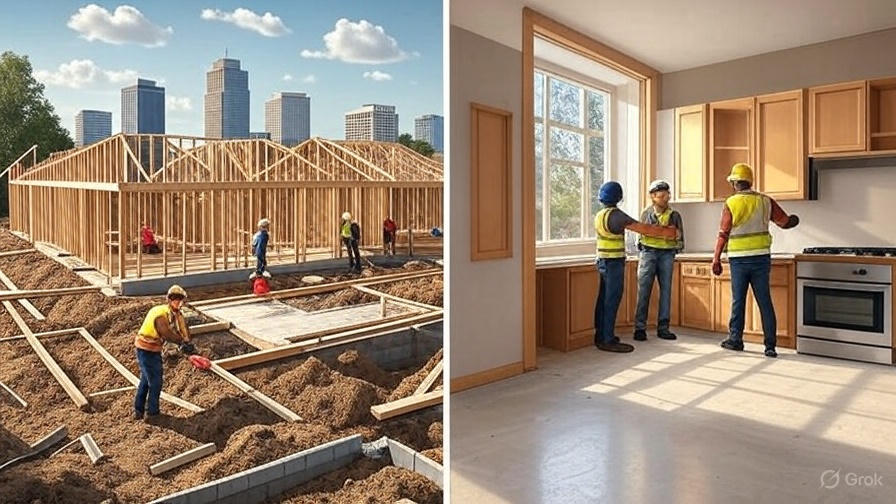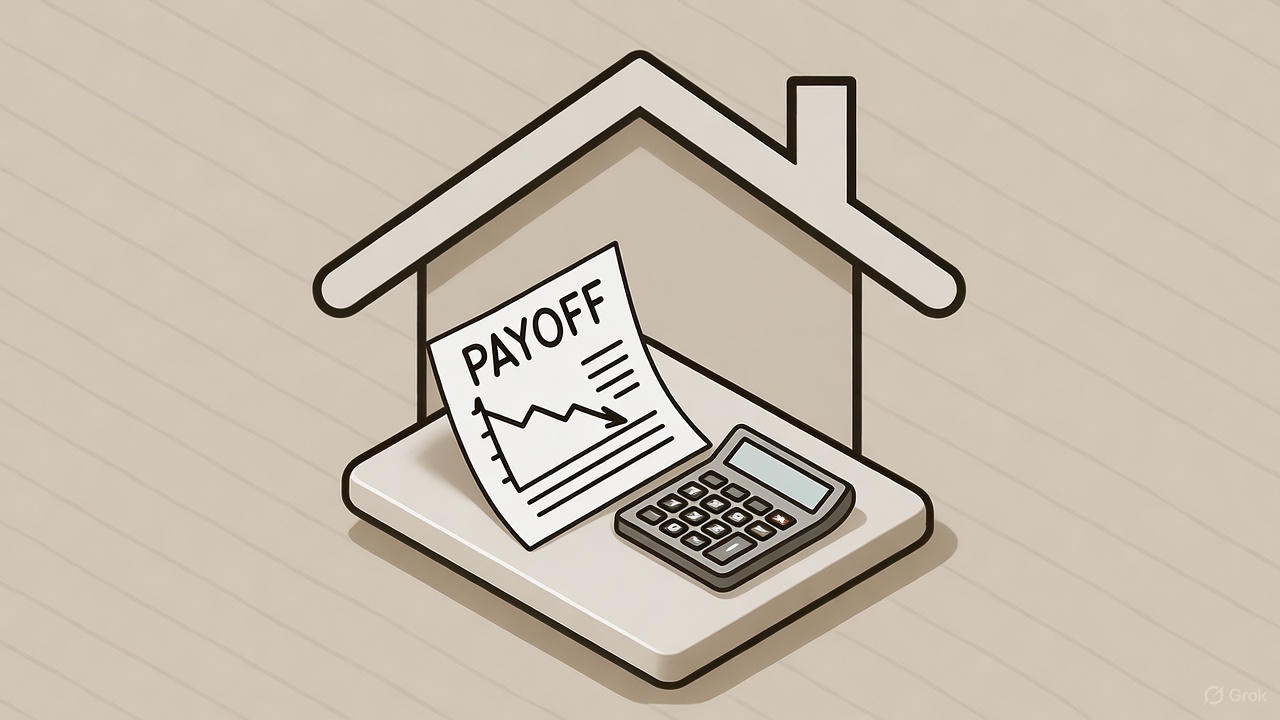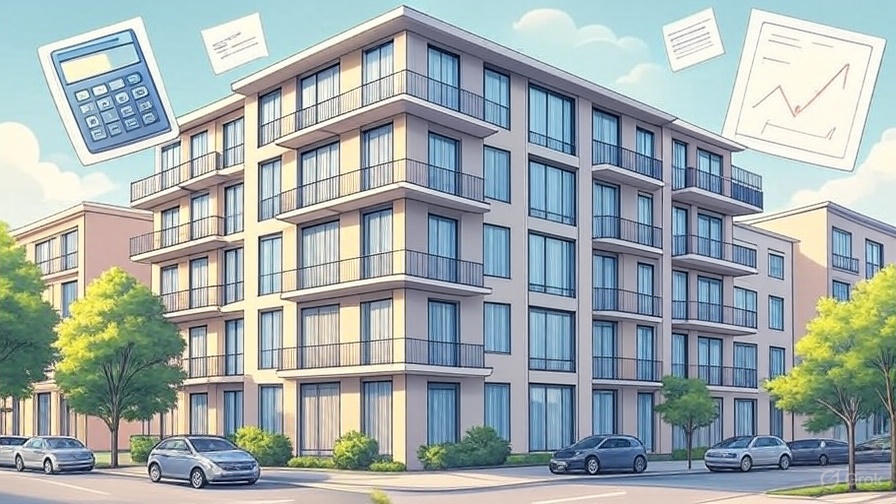Building from scratch or fixing what’s there? Both paths can get you the home you want, but the financing works differently. Here’s how to pick the loan that matches your project and timeline in Raleigh.
For broader context on home financing options, see our Essential Credit Tips for Homebuyers guide.
Construction vs renovation: the basic split
Construction loans fund building from the ground up. You can buy land and build, or tear down and rebuild on property you already own. Renovation loans finance improvements to existing homes—either ones you’re buying or already own.
Both types convert to permanent mortgages without re-qualifying once work completes. You get one loan that handles everything: land purchase plus building, or home purchase plus improvements. No separate construction loan followed by a new mortgage application.
How each loan type actually works
Construction-to-Permanent Loans
Most programs work in two phases. During construction (usually 6-12 months), you typically pay interest-only on money drawn as work progresses. Once building completes, the loan converts to a standard 30-year mortgage with principal and interest payments.
Some programs, particularly VA construction loans with certain lenders, start as 30-year fixed payments from day one—no interest-only phase. Same one-loan structure, just different payment timing.
Example: $500k construction budget, 20% down → $400k loan
Most programs: Interest-only during building (~7.5%)
Some VA programs: P&I payments from start (~7.0%)
Both convert: 30-year mortgage when done
Renovation Loan Programs
FHA 203(k) and Conventional HomeStyle loans work similarly to construction loans—one application covers purchase and improvements, then converts to permanent financing. The lender holds back improvement funds and releases them as work completes. You can buy and renovate, or renovate a home you already own.
Example: $350k purchase + $100k improvements = $450k total loan
3.5% down on 203(k) → ~$15,750 down payment
Regular mortgage payments start immediately
Alternative: Cash for renovations (no lender oversight)
Other Financing Routes
If you already own your home, you might use a HELOC (Home Equity Line of Credit) for renovations instead. This keeps your first mortgage untouched and gives you a revolving credit line for improvements. Or pay cash for renovations to avoid lender oversight entirely—faster, but requires significant liquid funds.
Timeline and decision triggers
Most people choose based on what they found first: a lot or an existing house. But if you’re open to both, consider your timeline. Construction loans require more upfront planning—builder selection, plan approval, permit timing. Renovation loans can move faster if the house is move-in ready while work happens.
Common triggers for construction: can’t find the right layout in existing homes, want specific energy efficiency features, or found the perfect lot. For renovation: found good bones in the right neighborhood, want to control improvement timeline, or need lower down payment options.
First-time buyers exploring these options should review 6 Questions Renters Should Ask When Applying for a Mortgage for additional preparation steps.
Rate locks, draws, and approval mechanics
Both loan types typically offer rate locks for the permanent phase, protecting you from rate increases during construction or renovation. Draw schedules release money at inspection milestones—foundation, framing, drywall for construction; demo, rough-in, finish work for renovations.
Key difference: construction loans usually have interest-only payments during building (though some VA programs start with full P&I payments immediately). Renovation loans typically begin regular mortgage payments right away since you often live in part of the house.
Both require detailed budgets, contractor qualifications, and timeline estimates upfront. The one-loan structure means you don’t re-qualify when converting to permanent financing—major advantage over older two-time-close programs we don’t offer.
Common traps to avoid
Big ones that catch people off-guard:
- Underestimating timeline buffers—add 2-3 months to any contractor estimate for permits, weather, and change orders.
- Choosing contractors based on price alone—both loan types require licensed, insured professionals with track records.
- Forgetting about temporary housing costs during major renovation, interest-only payments during construction (if applicable), or cash flow during HELOC draws.
- Not factoring in contingency funds—most lenders require 10-20% buffer for unexpected costs.
Raleigh builder and contractor considerations
Triangle area builders are busy, especially those approved by construction lenders. Get on lists early and expect 6-12 month timelines from contract to breaking ground. Renovation contractors have shorter lead times but vary widely in quality and lender approval status.
Local permit timing affects both paths. Raleigh and Durham move faster than some surrounding counties. Charlotte has its own rhythm. Factor permit waits into your timeline and budget planning.
FAQ
Construction loans fund building from scratch and convert to permanent mortgages. Renovation loans finance improvements to existing homes with similar one-loan conversion structure. Both avoid re-qualifying when converting to permanent financing.
Construction-to-perm often has lower rates initially but requires larger down payments. Renovation loans like 203(k) allow lower down payments but may have slightly higher rates.
Construction projects typically take 6-12 months from breaking ground. Major renovations usually finish in 3-8 months depending on scope and permits.
Construction loans require licensed builders with track records. Some renovation loans allow owner-builders, while others need licensed contractors depending on the scope.
Ready to map which program fits your project?
I’ll review your plans, timeline, and budget to recommend the construction or renovation loan that gets you to your dream home faster. Clear next steps, realistic timelines, smart financing.
Have plans or listings to review? 984-289-6479 · wolff@michaelthebroker.com




